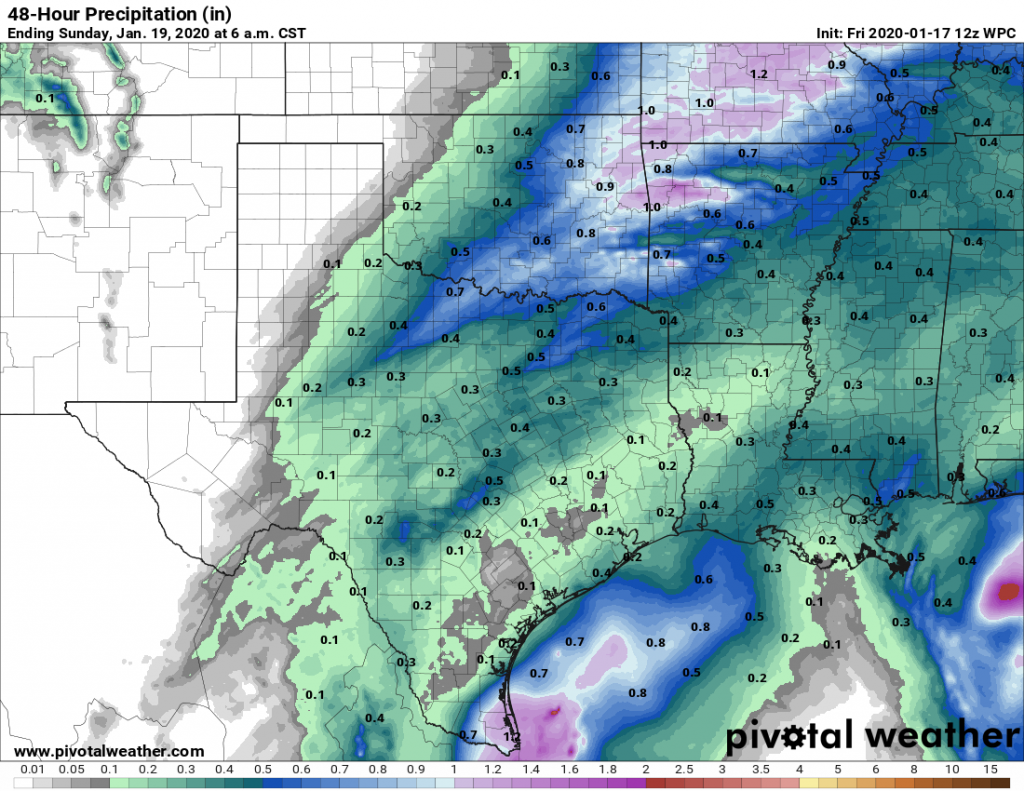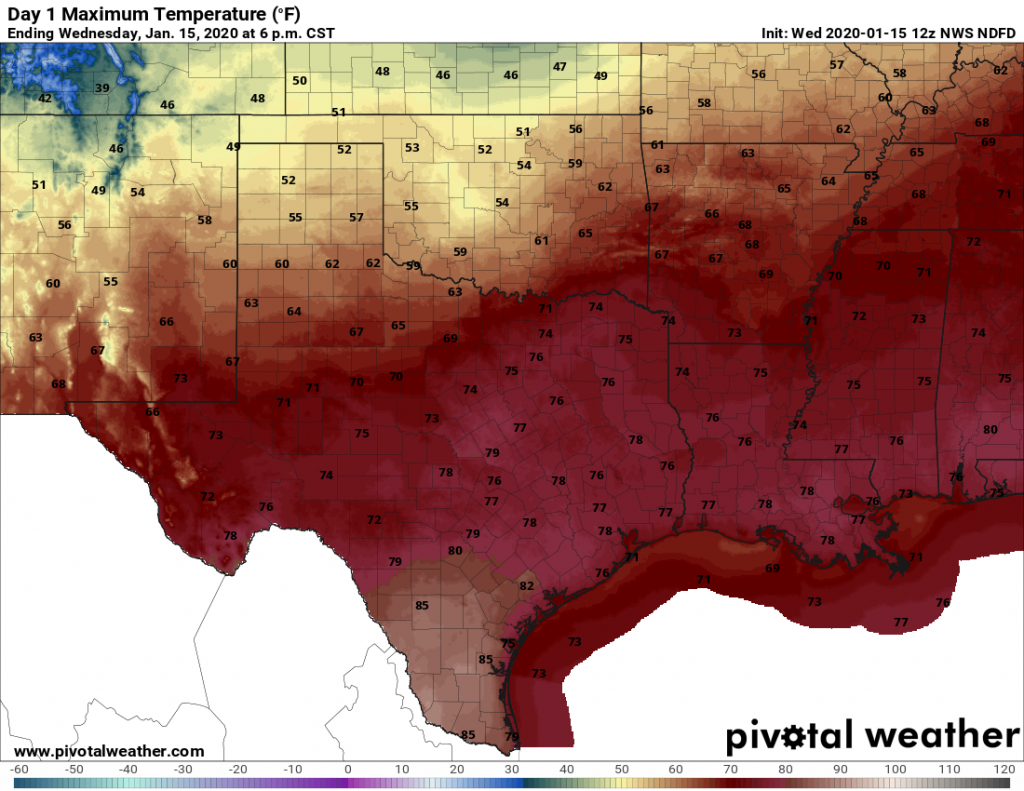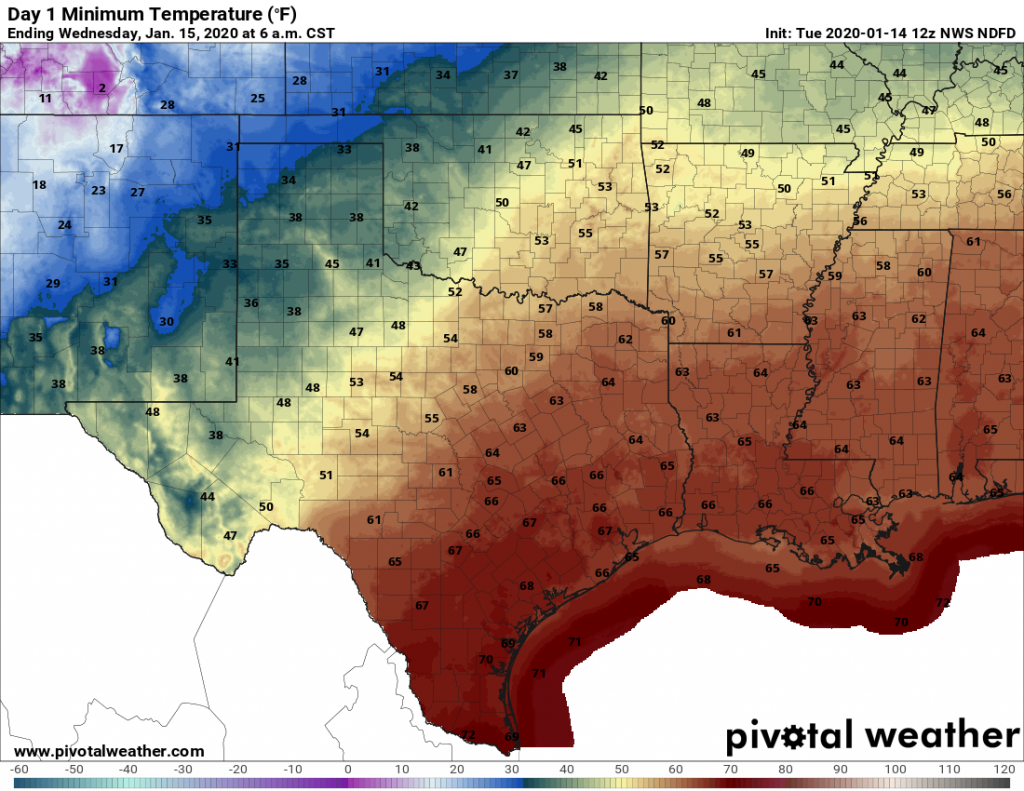Slightly cooler air has worked its way into most of the region from the northeast, as a weak front that has dissipated across the region. This has helped to mitigate the formation of fog—but don’t worry we’re expecting a return of fog this evening. Cooler, dryer weather finally arrives on Saturday evening, in the wake of a stronger front.
Friday
We’re seeing the development of some very light showers across the region this morning, and this pattern should slowly fizzle throughout the day. Effectively, this means we’ll see a mostly cloudy day, with highs of around 70 degrees and of course our old friend humidity. As mentioned, sea fog should develop this evening and during the overnight hours with just light winds and lows only on the upper 60s for the most part.

Saturday
The first half of the weekend will bring more of the same before a cold front sweeps through from northwest to southeast. Winds will shift to come from the north by or before sunset in central Houston, and the front itself should move off the coast by early evening. A thin, broken line of showers could accompany the front, with falling dewpoints and temperatures. This will bring an end to the split pea soup weather Houston has had for nearly a week—good riddance.


